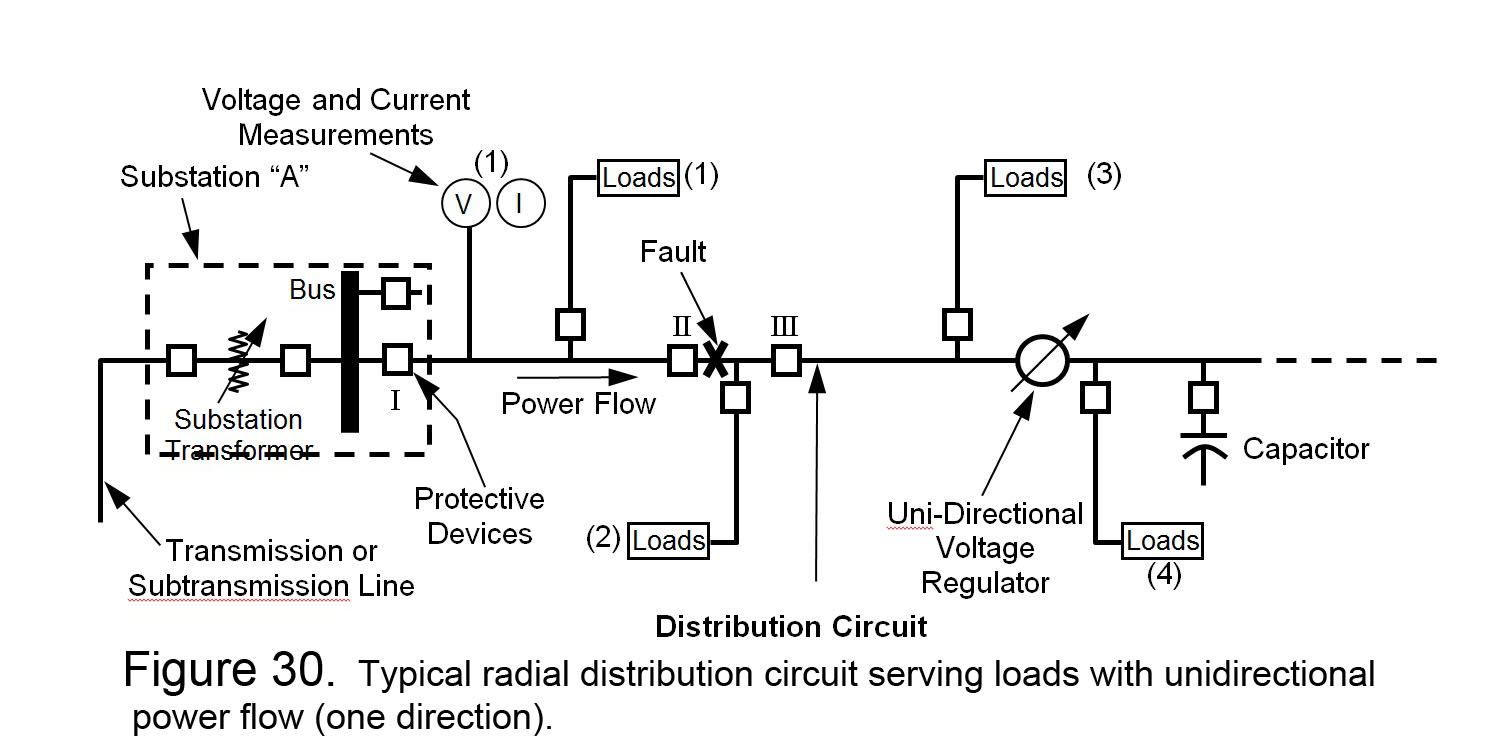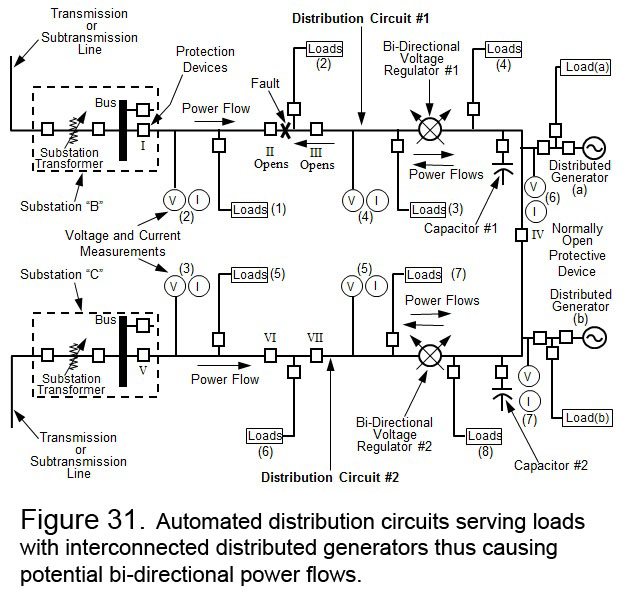
APPLICATIONS:
The list below is the possible applications for the STR Units. Click the appropriate button to get more details on the twelve applications.
10. Circuit Re-Configuration Data
Measurements:
Circuit re-configuration current and voltage data is more applicable for distribution circuits where the availability of information is lacking on both the circuit and its laterals. In most cases, the last point where data is commonly collected is at the head end of the circuit at the substation or at the line breaker. Basic DSTR Units measure the line current and fault current; and Option B DSTR Units add the voltage measurement, so Option B Units can provide all the power quantities and even lightning stroke current and voltage.
Calculations:
From Option B Units' measured data, all the power quantities such as kVA, kW, kVAr, and P.F. are available including percent unbalanced current and voltage, and total harmonic distortion.
Applications:
- Today more information is needed on distribution circuits because of the advent of distributed generation (DR) and the application of back-to-back switching of adjacent circuits to improve reliability of service. Many Distribution Automation Systems (DAS) use 3 recloser, and 5 recloser loop schemes where one reclosure of 3 or 5 remains normally open between adjacent circuits, such that when faults occur on one circuit the tie reclosure (normally open), (See Figures 30 and 31) is closed to restore the tag end customers of the faulted circuit. The DSTR Units not only provide the fault current and voltage data, but provide the pre-fault load and voltage data so the re-configuration can be safety accomplished without creating overloads and under voltage conditions on the adjacent circuit which was not involved with the fault condition.


- Distributed generation (DG) interconnected to the normally radial designed distribution system with unilateral power flows (one source) often causes bi-directional power flows and can affect the voltage regulation on the circuit. Thus many DAS designs use bi-directional voltage regulators to cope with this change in design. DSTR Units provide the needed information of all power quantities on both circuit feeders and circuit laterals. DSTR Units with the Low Threshold Current Power Supply (LTPS) Accessory can operate down to 6.8 amperes, which is well below the lowest currents normally experienced on most laterals.
Benefits:
- DSTR Units provide the needed level of power quantity monitoring of current and voltage on the circuit and laterals for most DAS schemes requiring circuit re-configuration and isolation of faults.
- Not only do DSTR Units aid in providing data for normal operation of the circuit and input to voltage regulation systems, but can provide the operating data from (DG’s) interconnected to the circuit including the transfer trip feature at a very low cost increase.










